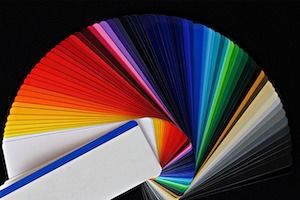Creativity
Creativity Can Be Bright, Dark, and Everything in Between
The gray areas of creativity emphasize its various shades.
Posted February 18, 2020 Reviewed by Kaja Perina
Creativity—the all-powerful positive force that brings into being new ideas, products, dimensions, and innovations—has a dark side. And at some level, we know it probably does because we’re likely to have engaged in dark creativity ourselves, at some point.

Maybe not dark, but definitely a different hue of creativity. For instance, think about a time you may have come up with a clever lie to avoid meeting someone. Was it original, yet plausible? Was it effective? If it was both, this would count toward a dark-ish use of creative thinking.
That said, as with everything in creativity science, context matters a great deal. Was the someone you were avoiding a person you like or dislike? Had they wronged you in the past and therefore you believed avoiding them was justifiable? Or did you have another commitment at the same date and time, and preferred to lie instead of hurt their feelings?
Over the past decade or so, creativity researchers have begun exploring this dark side in a methodical manner; one of the ways is by focusing on the objective of deploying creative resources. Is this a benevolent goal or a wicked one? Is it primarily motivated by self-interest or to serve others? The prosocial-antisocial-asocial avenues across which creativity can operate brings to the fore discussions of the virtue or vice of creative acts.
When we think of the term creativity, noble or benign actions, such as composing soul-touching music or designing an aesthetically-appealing website or solving a perplexing business problem come to mind. It is less likely for us to immediately consider novel instances of propaganda, deceit, forgery, or even more severe criminal activity as creative.
One reason may be because these actions are associated with primarily harming others or helping oneself without caring about the potential for collateral damage. Traditionally, creativity is associated with ways to benefit others in society, or at least not detract from their welfare. Dark creative acts serve to benefit the creators themselves, highlighting that the chief stakeholder(s) in such instances is the individual or collective partaking in this creative misbehavior.

When a burglar devises a new way to break into a jewelry store and steal a 22-carat diamond ring, there is no greater good for society that comes off the action. Yet there is an unequivocal benefit to the individual. It can be a selfish act (the burglar’s ex-partner owns the store and this is a devious act of revenge) or a self-interested one (the store owner is unknown and the ring can fetch a good price on the black market), but it is unlikely to be a benevolent one. However, as a consequence of the burglary, the store owner may invest in smarter technology and resources to prevent another theft, perhaps employing a creative professional to design the same.
In this way, the bright and dark sides of creativity are often interdependent; one may cease to exist without the other. The grayer areas of creativity arise when we as judges of original productions are still unclear about where the eventual benefit of creative behavior lies. Is hacktivism bright creativity or dark? Are whistleblowers (and the ingenuity they apply to ensure they are secure after having blown the whistle) beneficial or not? What about dark creativity in fiction and cinema — does that really harm or help?
It may be time to acknowledge the entire grayscale of creative manifestations in thought and action. After all, there is no light without the dark.
References
Cropley, D. H., Cropley, A. J., Kaufman, J. C., & Runco, M. A. (Eds.). (2010). The dark side of creativity. New York, NY: Cambridge University Press.


